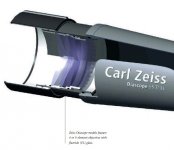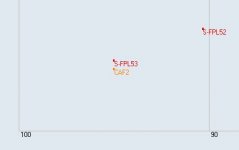Mike Johnston
Well-known member
Can I just double-check a few things as regards the objective lenses in high-end scopes?:
Swarovski scopes have a doublet either of standard or 'special' (HD) glass.
Zeiss scopes only have a doublet of 'special' (FL) glass.
Leica scopes have either a doublet of standard (?) glass or a triplet of 'special' (flourite) glass.
Does this mean that Leica make the only apochromats, the others making 'super-achromats'?
Do any other scopes (e.g. Kowa) use an apochromatic lense system?
Does the Leica non-APO still use an ED-type glass in its doublet?
Thanks
Edit: It's said that an ED/HD/FL lens has about 94% colour correction, whereas an APO has 99%. Is that difference even noticeable in the Leica compared to others?
Swarovski scopes have a doublet either of standard or 'special' (HD) glass.
Zeiss scopes only have a doublet of 'special' (FL) glass.
Leica scopes have either a doublet of standard (?) glass or a triplet of 'special' (flourite) glass.
Does this mean that Leica make the only apochromats, the others making 'super-achromats'?
Do any other scopes (e.g. Kowa) use an apochromatic lense system?
Does the Leica non-APO still use an ED-type glass in its doublet?
Thanks
Edit: It's said that an ED/HD/FL lens has about 94% colour correction, whereas an APO has 99%. Is that difference even noticeable in the Leica compared to others?
Last edited:





